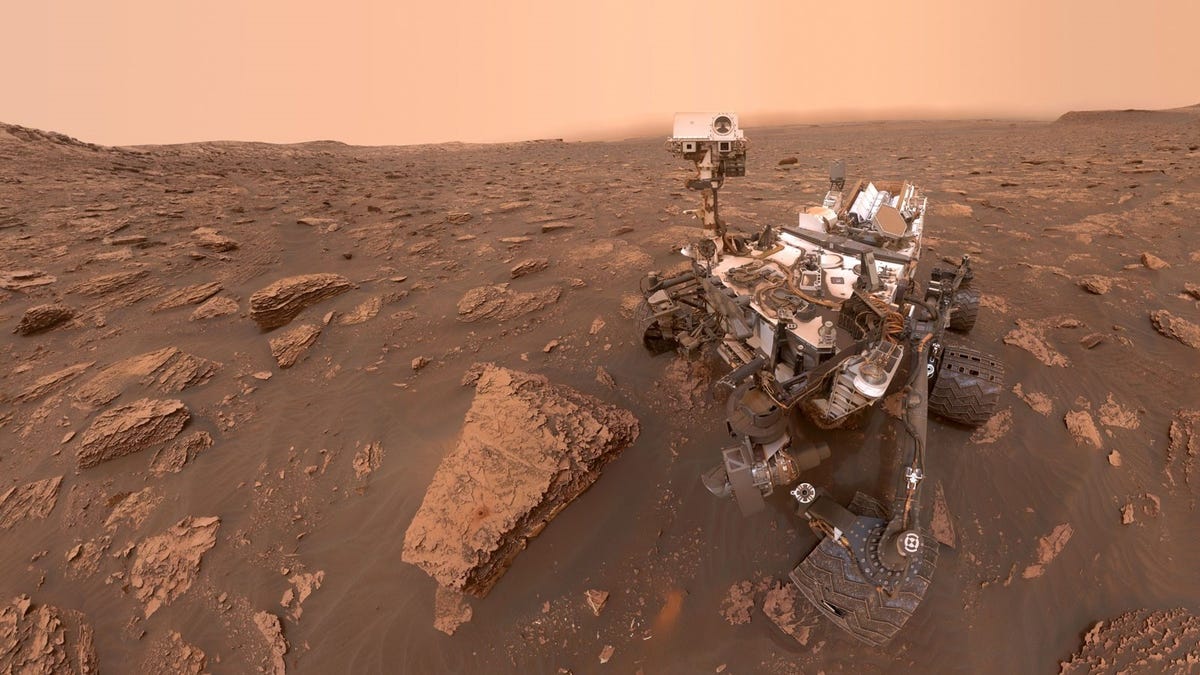NASA’s Curiosity rover landed on Mars back in 2012 and since then it’s been put to work exploring the surface of the Red Planet. In the process, it’s traversed more than 20 miles of the lunar surface, which hasn’t been too kind on its little roving wheels.
In a new update on NASA’s Curiosity mission, the space agency shared a few insights into the wear and tear that Curiosity has gone through during its 12 years on the red planet. Over that time, it’s covered 20.13 miles and while that might not sound like very far, the surface of Mars has wrought havoc on the little craft’s wheels.
The check-in on Curiosity’s wheels come as the craft reaches its 4,315th sol on the surface of Mars, which is the Martian equivalent of a day. NASA explained in a blog post that it performs this kind of check from time to time to see how the craft is “holding up on the rough terrain.”
By pointing the cameras on Curiosity down at its wheels, engineers on Earth can see the wear on the six wheels that it uses to traverse the Martian landscape. Despite covering just 20 miles on the Red Planet, the wheels are looking a bit rough around the edges now, reports CNET.
While driving over the rocky, rugged Martian landscape, Curiosity has picked up a few holes in its wheels, while the tread pattern appears to be staying intact. As CNET reports:
NASA isn’t sweating the situation. The damage has been building for years, so the rover team came up with some clever solutions to extend the life of the wheels. The team scrutinizes the rover’s path and tries to avoid particularly nasty terrain. Curiosity is also able to drive backward over rough patches to reduce the strain on certain wheels.
Curiosity regularly checks up on its wheels. It takes multiple sets of images and drives to expose different parts of the wheels.
A rip through the wheel of a Martian rover isn’t as serious as a rip through the tire on your Hyundai Elantra however, as Curiosity doesn’t use the same kind of rubber, air filled tires that you’d find here on Earth. Instead, the craft’s six aluminum wheels comprise six spokes, a stiffening ring to retain their shape and a simple chevron pattern on the outside to aid traction.
NASA reports that this kind of wear was “expected” on the exterior of the wheels, as the aluminum is thinnest in between the chevrons. This means the gaps in the tread pattern are susceptible to the kind of damage that has been picked up already.
In fact, the damage observed on Curiosity helped the agency refine the wheel design for its Perseverance rover, which landed on Mars in 2021. The new rover has larger diameter wheels and a closer, straight tread pattern that should help the rims hold up for longer.
Maybe this means Elon Musk won’t have to pack a bunch of spare rover tires on his missions to Mars, which he claims will come in the next few years.

